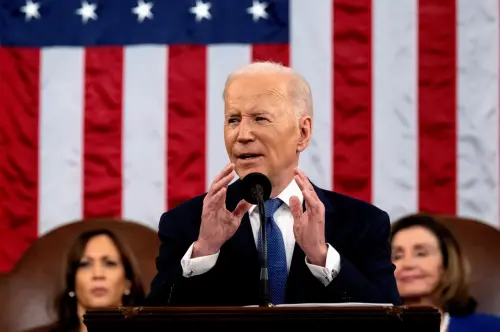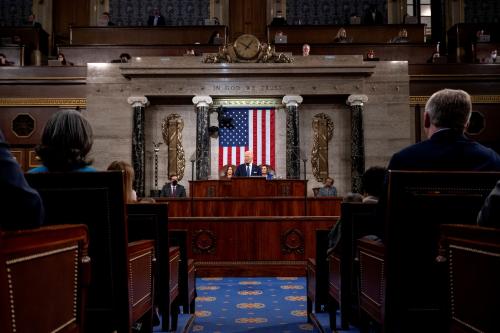This post is part of the Biden State of The Union 2023 blog series in which Brookings experts preview national issues and policy proposals that President Biden should discuss in his second annual State of the Union Address.
Tonight, President Biden will probably talk about his decision to end the COVID-19 Public Health Emergency (PHE). But the Administration still needs a well-defined plan to address existing public health challenges and COVID-related health inequalities.
The end of the COVID-19 Public Health Emergency (PHE) will arrive without a well-defined plan to address existing and COVID-related health inequities. We need President Biden to explain how COVID-related testing, vaccines, and treatment will be covered by government and private insurance plans and protect the uninsured. Ending the PHE may lead to out-of-pocket expenses for tests, vaccines, and treatments. Private insurance and government health plans will likely require some out-of-pocket expenses for these health protections. Over 27 million uninsured adults will face challenges with accessing these COVID-19-related screening and health promotion tools. Medicare and Medicaid recipients will continue to receive no cost services and those with private insurance should expect no to low costs. Children who are not insured can receive vaccines either free or at the cost of administrative or clinical fees (e.g. office fees, blood tests, administering the shot) from the Vaccines for Children Program.
One suggestion is for the Biden Administration to connect potential public health challenges to their commitment to health equity as described in Executive Order 13985, Advancing Racial Equity and Support for Underserved Communities Through the Federal Government. This Executive Order aims to improve health for underserved communities by building the capacity of agencies to work towards health disparity gaps. To achieve this the Biden Administration has to reduce growing healthcare costs. Current estimates in health inequities amounts to $320 billion in annual healthcare spending. This can increase to $1 trillion or more by 2040 if not reduced. This cost may be exacerbated by those who will be disenrolled from Medicaid, especially in states that have not expanded Medicaid. Another factor that may increase these costs includes managing long-COVID-symptoms, which is currently $9,000 annually.
The Biden Administration’s strategy to increase access to free and low-cost healthcare among communities of color and low-income Americans is not the only solution. The Affordable Care Act (ACA) created pathways towards universal coverage, which significantly increased healthcare coverage, preventative health screenings, and reforms to private insurance. However, the Medicaid infrastructure cannot be the only health-infrastructure to increase access to health promotion. Ending the PHE will not fix our public health challenges. The Biden Administration needs a plan to diminish fragmentation in service delivery, to enhance health technologies, and lower the barriers and costs of public health and healthcare interventions. Policies to address these issues can extend the quality and longevity of life, especially among those suffering from long-COVID.
The Brookings Institution is committed to quality, independence, and impact.
We are supported by a diverse array of funders. In line with our values and policies, each Brookings publication represents the sole views of its author(s).











Commentary
Biden State of the Union 2023: Enhancing the state of health equity
February 7, 2023